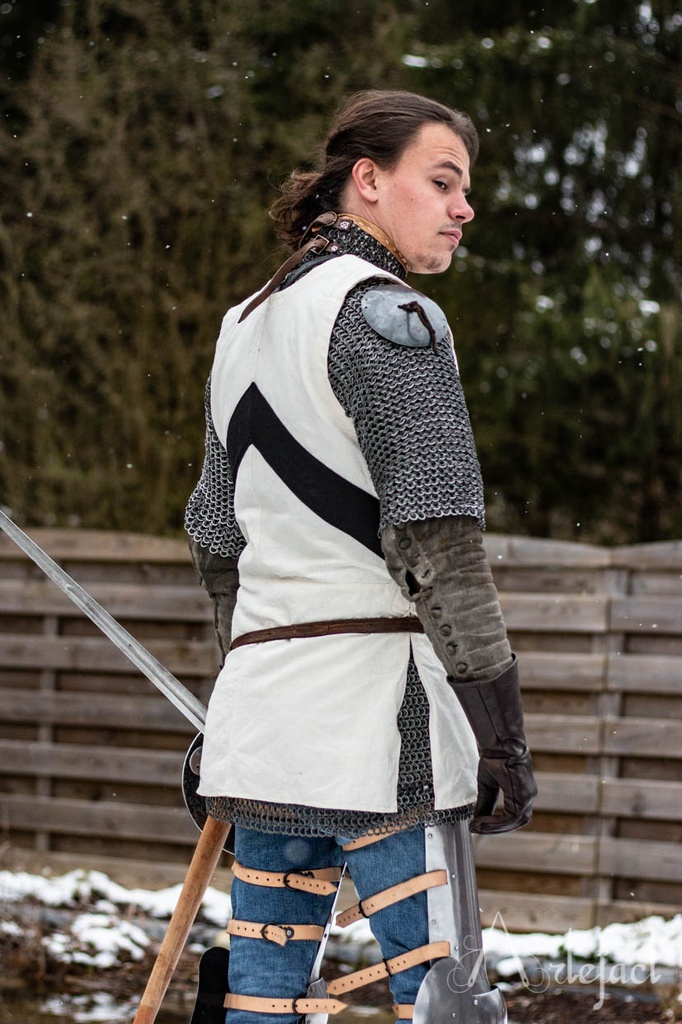Coat of arms14th century
The coat of arms is a military surcoat that one puts on over one's armour.
It evolves a lot during the 14th century.
At the beginning we find the 13th century style, then it becomes more and more fitted on the bust and ends up being shortened until the top of the thighs.
Some are slit at the front and back, still wide at the bottom around 1350, they become tighter thereafter.
They can be opened in front or on one side with buttons or lacing.
Often depicted sleeveless or with short sleeves, rarer are the long sleeves imitating the shape of the houppelandes at the end of the 14th century.
Sources:
- BL Additional 15277 Paduan Bible Picture Book 1400
- BNF Latin 757 Missale et horae ad usum Fratrum Minorum 1385-1390
- Recumbent of Johann II von Katzenelnbogen 1357
Possible options :
- With or without lining
- Material: wool, silk, linen, futaine, cotton (non-historical)
- Visible seams handmade
- Painted, applied (cut and sewn) or embroidered coat of arms
- Dagging on the edges







